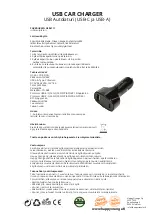
NOTE:
MAXIMIZING ICE RETENTION
A YETI® Hopper™, with its welded DryHide™ double-TPU laminated construction, thick
ColdCell™ insulation, and waterproof HydroLok™ Zipper provides remarkable insulating
performance and ice retention capabilities.
But to get the most out of your cooler, we strongly recommend you read the concepts
outlined below. Consider it Ice 101. These techniques are used by seasoned outdoor
professionals who rely on extended ice retention and we stand by them.
Start with a cold YETI Cooler
A cooler is designed to insulate, which
means it will retain heat as well as cold.
Store your cooler in a cool environment
prior to loading it. If stored in a warm
garage, hot vehicle, or in direct sunlight
prior to use, a significant amount of ice
will be wasted cooling the cooler itself.
One way to cool the Hopper is to preload
it with a sacrificial bag of ice. The starting
temperature of the cooler is one of the
most commonly overlooked variables in
ice retention.
Dry ice is the solid form of Carbon Dioxide and its -109° F temperature
makes it a very attractive cooling alternative. Although the Hopper’s
DryHide body construction is more than capable of withstanding that
extreme cold, we still recommend against it and here’s why. Instead of
melting, dry ice becomes C02 gas as it warms. The Hoppers are so airtight
that they will inflate with this C02 gas until they expand, which threatens
the integrity of your cooler. Not exactly the grand send-off we have in mind
for your Hopper.
Air is the enemy
Large pockets of air inside your cooler
will accelerate ice melting. Cut down
on air space by adding more ice.
Freeze or pre-chill contents
Chilling or even freezing your cooler's
contents is another way to extend ice
retention. Consider that it will take over
1 lb. of ice to cool a six pack of beer at room
temperature. Just another reason to keep
cold beer on hand.
AVOID DRY ICE
8
Summary of Contents for hopper
Page 1: ...HOPPER OWNER S MANUAL ...
Page 3: ......






























